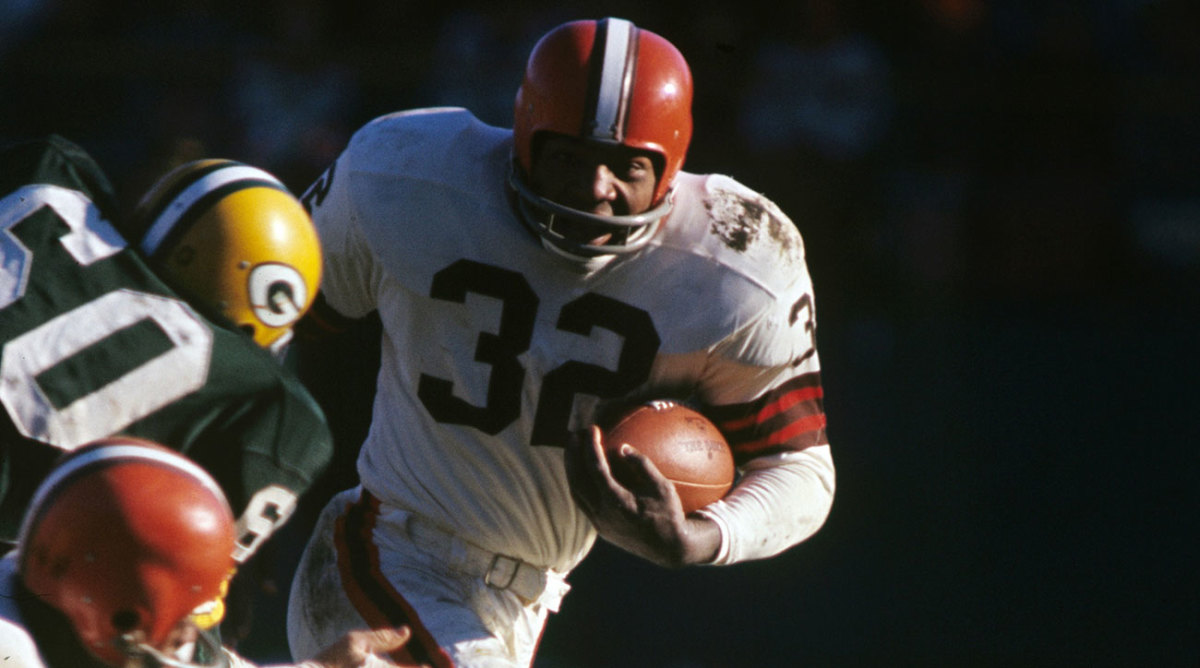Jim Brown Created the Template for Athletes Making an Impact Beyond Sports
Saying that Jim Brown was one of the greatest players of a sport in American history is heady enough without recognizing that, in addition, his legacy includes the off-field blueprint for the modern athlete. This, at a time of social unrest and upheaval, may end up being the headline on his life and career.
It is undoubtedly an imperfect legacy, as Brown also left behind a string of accounts of violence against women. Elsewhere, though, his ideas of personal freedom and the potential of his platform helped shape a new generation of players known as much for activism and pursuit of individual passions as for getting tackled (or, in Brown’s case, constantly evading and bulling right through those trying).
Brown walked away from the NFL—a prospect that is utterly terrifying to many players and, at the very least, life-altering for those who have defined themselves via a popular national pastime—after just nine seasons, still at the height of his power. He’d never missed a game due to injury. He’d compiled three straight seasons of 1,400 rushing yards or more, including a masterpiece of a 1963 campaign in which he rushed for 1,863 yards and 12 touchdowns. He was Barry Sanders before Barry Sanders, Calvin Johnson before Calvin Johnson and Andrew Luck before Andrew Luck. He left us all to wonder what could have been if he’d played out a longer career, while still recognizing the transcendence of what he gave us.

Brown left, rather unabashedly, to pursue interests that had nothing to do with football, directly challenging the sport’s militaristic power structure and the kind of forever devotion athletes were supposed to maintain to their craft.
Most significantly, Brown dove into the civil rights movement. He organized summits of powerful Black athletes. He invested heavily in the Black community. He supported Colin Kaepernick’s protest of social inequality and police brutality, though he publicly disagreed with Kaepernick’s kneeling for the national anthem.
Remembering Jim Brown: SI’s Coverage of the Legendary Running Back
As a person, Brown was notoriously difficult to pin down or define, but there is little doubt that his forays into film and social justice paved the way for other athletes to do so. Now, it is almost more surprising when a figure in the athletic space does not exist in a parallel space devoted to a personal initiative or cause. Brown, in an interview with NFL Network, noted the ultimate difficulty in trying to sway the public en masse, but his joy in having tried. Especially recently, in the wake of several high-profile police killings of Black people, entire football teams have come together in displays of unity. Brown took that as a sign of progress.
Now, being an athlete is much less of a metaphorical life sentence. Many players dabble in broadcasting or media during their playing careers. The name, image and likeness movement has allowed college athletes to get a taste of life beyond the sport they’ve been cocooned in for so long. Tom Brady produced and released a move before the end of his playing career. Many of the most famous athletes of the late 1990s and beyond will be more known for their work on television, in social media or somewhere else entirely.
This is Brown’s enduring gift. In speaking to current or recently retired players or coaches, there is often such a discomfort in confronting the identity shift from being part of the NFL to doing something else. There are still so many well documented struggles of players who fail to acclimate to an incubated and deified existence.
But, starting with Brown, there are also examples of using the game as a means to another end. So often, even to its best players, football is a pulverizing force that takes the best of them and leaves little remaining. Brown, conversely, decided to take as much as he could from football and dream of a life that hadn’t quite existed yet in our public consciousness, especially for a player of color. In that way specifically, his legacy will continue to endure, even if the stretches of on-field dominance are forgotten.
